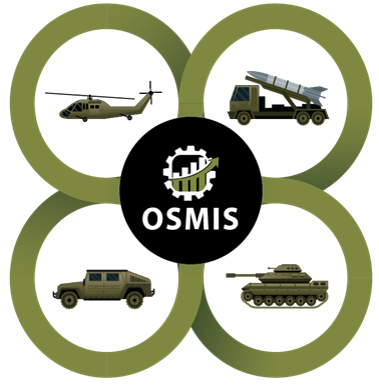|
OSMIS Cost Reports
Overview of the Army VAMOSC OSMIS
Visibility and Management of Operating and Support Costs (VAMOSC)
Operating and Support Management Information System (OSMIS) The Operating and Support Management Information System is the Army’s Visibility and Management of Operating and Support (O&S) Costs program. OSMIS tracks O&S information for more than 1,600 major Army weapon/materiel systems for the Office of the Deputy Assistant Secretary of the Army for Cost and Economics (DASA-CE). OSMIS-tracked systems include combat vehicles, tactical vehicles, artillery systems, aircraft, electronic systems, and miscellaneous engineering systems. DASA-CE generates and fields a wide variety of requests for OSMIS data to support analysis tasks throughout the defense community.
Department of Defense analysts have found historical O&S data to be useful in projecting O&S costs for future systems, developing O&S cost analyses, and preparing O&S estimates. The types of analyses and comparisons include the following:
- Operating and Support Cost Reduction Efforts
- Total Ownership Cost (TOC)
- Component Cost Analyses (CCA)
- Program Office Estimates (POE)
- Independent Cost Estimates (ICE)
- Cost Estimating Relationships (CER)
- Analysis of Alternatives (AoA)
- Cost and Operational Effectiveness Analyses (COEA)
- Economic Analyses (EA)
- U.S. Army Materiel Command (AMC) Life Cycle Management Commands (LCMCs) weapon/materiel system O&S cost comparisons to new systems in the acquisition cycle
- Planning, Programming, Budgeting, and Execution system
|
 |
OSMIS Relational Database
The OSMIS Relational Database presents annual Operating and Support (O&S) historical information for Army weapon/materiel Systems (such as Army aircraft, tanks and combat vehicles, etc.) which includes costs for the following:
- Class III consumption (POL - Petroleum, Oils, and Lubricants) for operating combustion/turbine engines; however, solid fuels, coal, and related products are excluded
- Class V consumption (training ammunition only)
- Class IX consumption (repair parts and components, including kits, assemblies and subassemblies, reparables, and consumables) required for maintenance support of equipment designated for OSMIS tracking and depot/field level maintenance costs
The OSMIS relational database also provides commodity specific insight into Army OPTEMPO and Cost Factors. This database presents easily locatable reference data that may be extracted by:
- Work Breakdown Structure (WBS)
- Command
- Installation
- Brigade Combat Team (BCT) and Unit Identification Code (UIC)
The OSMIS Relational Database contains the following commodity group of weapon systems:
- Aviation Systems consisting of rotary and fixed wing aircraft
- Combat Systems consisting of tanks and tracked combat vehicles
- Missile Systems consisting of air defense missile systems, surface-to-surface missiles, and detection systems
- Armament Systems consisting of towed artillery weapons
- Tactical Systems consisting of wheeled vehicles
- Engineer/Construction Systems consisting of engineer, construction, electrical power generation, and floating equipment
- Communications/Electronics Systems consisting of radio receivers, radars, teletypewriters and terminal sets, communications and data processing systems, and terminals
Data sources used in these reports are from the U.S. Army Logistics Support Activity (LOGSA) Logistics Information Warehouse (LIW), AMC's LCMCs, HQDA G-3, and HQDA G-4. |
|